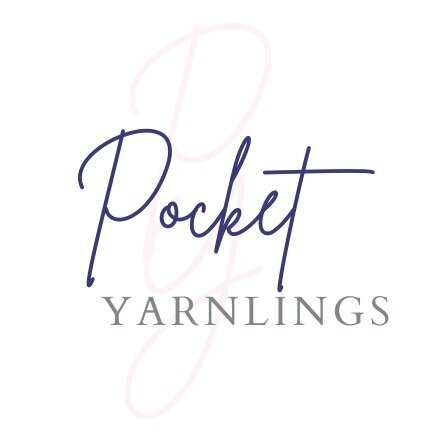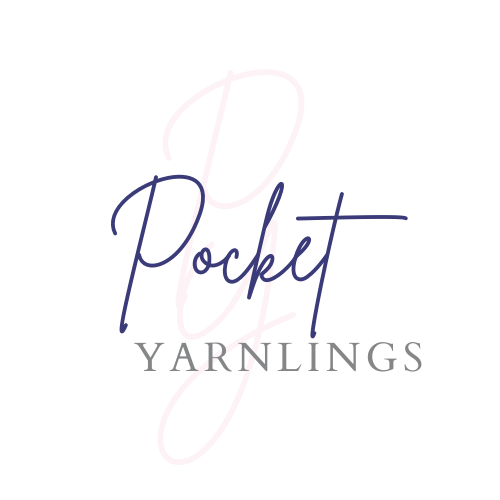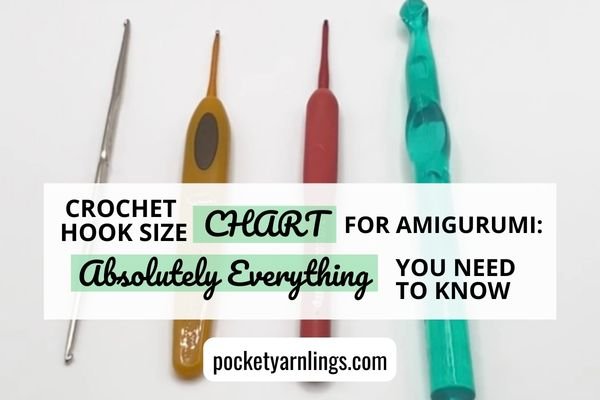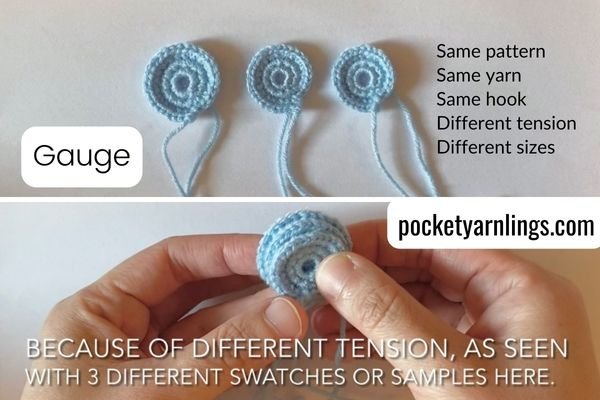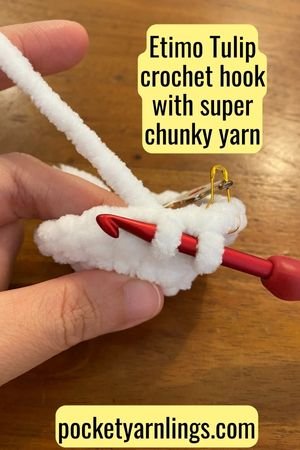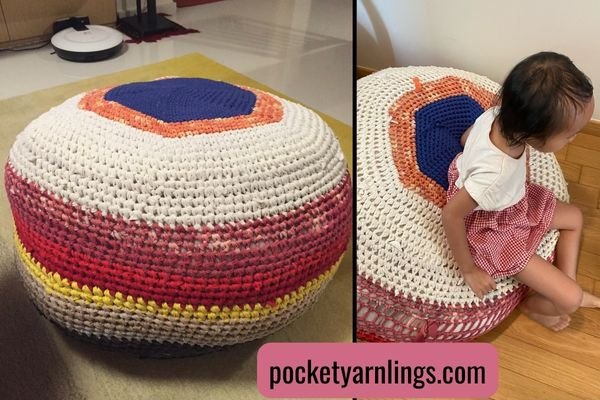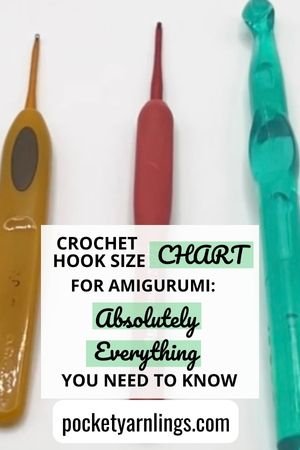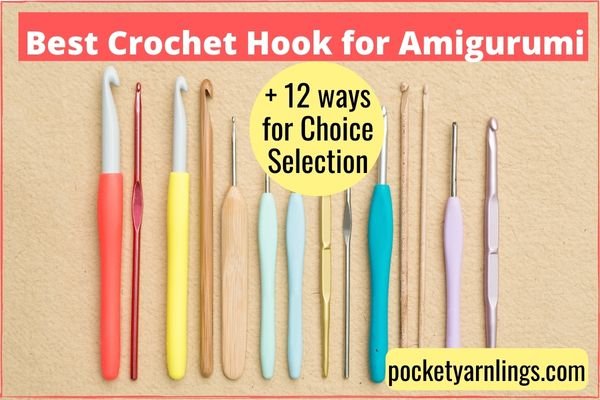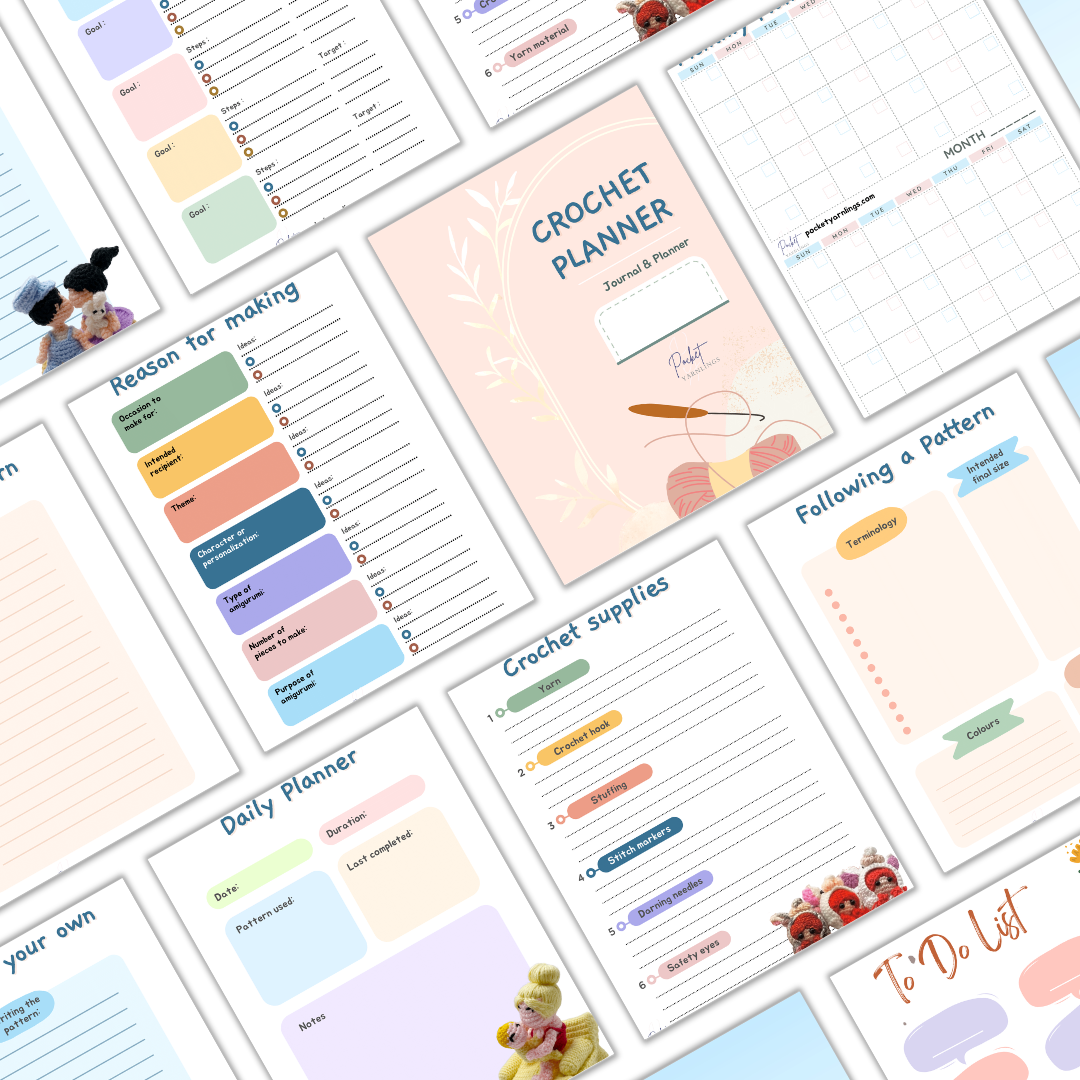Crochet Hook Size Chart for Amigurumi: Absolutely Everything You Need to Know
Crochet is a popular hobby that has been around for centuries, and amigurumi is a subcategory of crochet that involves making small stuffed animals and other cute objects. One of the most important aspects of creating amigurumi is choosing the right hook size. The crochet hook size chart for amigurumi can be a bit confusing for beginners, but it is essential to understand in order to achieve the desired outcome.
The size of the crochet hook you use will determine the size of the stitches and the overall size of your finished amigurumi project. Using the wrong size hook can result in a project that is too big or too small, and may not look as intended. Therefore, it is crucial to choose the correct hook size that matches the yarn and pattern you are using. In this article, we will explore the different hook sizes and their corresponding uses in amigurumi crochet.
*This blog post may contain affiliate links. When you make a purchase through my link, I may receive a small commission at no additional cost to you.*
Table of Contents Show
How many Crochet Hook Sizes are there?
Crochet hooks come in various sizes, and it can be confusing to understand which hook size to use for a specific project. In amigurumi, the size of the hook is crucial as it determines the final size and shape of the toy. The following paragraphs will help you understand the different types of crochet hook sizes and how to choose the right one for your amigurumi project.
Crochet hook sizes are designated by a letter or a number. The most common crochet hook sizes range from B-1 (2.25 mm) to P-16 (11.5 mm). The letter or number on the hook indicates the diameter of the hook's shaft. The smaller the number or letter, the smaller the hook size, and vice versa.
Crochet Hook Size Conversion Chart
It's important to note that different countries may use different crochet hook sizing systems. For example, the UK uses a numbering system, US uses a lettering system (or numbers in mm) and Japan uses a numbering system. It's essential to check the hook size conversion chart to ensure that you are using the correct size.
When choosing a crochet hook size for amigurumi, it's crucial to consider the yarn weight you're using. A lighter weight yarn requires a smaller hook size, while a heavier weight yarn requires a larger hook size. The pattern you're following will usually indicate the recommended hook size for the yarn weight.
How to Read a Crochet Hook Size Chart?
Crochet hook size charts are an essential tool for anyone who wants to make amigurumi. They provide information about the size of the hook you should use for a particular project. Here are a few tips on how to read a crochet hook size chart:
The first thing you need to know is that crochet hook sizes are measured in millimeters (mm). The size of the hook determines the size of the stitches you make. The larger the hook, the larger the stitches will be.
Crochet hook size charts usually list the sizes of the hooks from smallest to largest. The smallest hook size is usually 2.0 mm, while the largest is usually 12.0 mm.
The chart will also tell you what type of yarn is best suited for each hook size. For example, a 2.0 mm hook is best used with a fine-weight yarn, while a 12.0 mm hook is best used with a super bulky-weight yarn.
The chart may also provide information about the gauge of the stitches you should make with each hook size. Gauge is the number of stitches and rows per inch in a crochet project. It is important to match the gauge listed in the pattern to ensure that your finished project is the correct size.
Some crochet hook size charts may also include information about the hook material. Hooks can be made from a variety of materials, including aluminum, plastic, and bamboo. The material of the hook can affect the way the hook feels in your hand and how it glides through the yarn.
What is a size 5 crochet hook in mm?
In the United States, crochet hooks are typically labeled with a letter size rather than a specific millimeter (mm) measurement. The conversion from a letter size to the corresponding mm size can vary slightly depending on the manufacturer. However, on average, a size 5 crochet hook is approximately 3.75mm in diameter. You can refer to the chart above for conversion.
What letter is 7.0 mm crochet hook?
In the United States, crochet hooks are typically labelled with letter sizes. However, the letter size for a 7.0mm crochet hook is not standardized across all brands. Some manufacturers may label it as an "L" hook, while others may use different letter sizes.
What size crochet hook is a 7?
In general, a size 7 crochet hook in both the UK and US sizing systems (and even for Japan) corresponds to a 4.5mm hook. However, it's important to note that sizing conventions can vary slightly between different brands and countries.
What is crochet hook size H?
In the US sizing system, a crochet hook size H is typically equivalent to a crochet hook size of 5.0mm. On the other hand, if you are looking at crochet hook size H in UK sizing system, then it corresponds to hook size 6. The UK and US crochet hook sizes are not directly equivalent, refer to the conversion chart above to see what I mean.
Does Crochet Hook Size Matter and Why?
Choosing the right crochet hook size is critical when making amigurumi. The hook size can significantly impact the final product's size, shape, and texture. Here are a few reasons why crochet hook size matters:
1. Gauge
Gauge refers to the number of stitches and rows per inch. It is crucial to achieving the correct size and shape of the amigurumi. The hook size determines the gauge. Using a different hook size can result in a different gauge, which can affect the amigurumi's size, shape, and overall appearance.
2. Texture
The texture of the amigurumi can also be affected by the crochet hook size. Using a smaller hook size can result in a tighter stitch, which can make the amigurumi more rigid. On the other hand, using a larger hook size can result in a looser stitch, which can make the amigurumi more flexible.
3. Comfort
The crochet hook size can also affect the comfort of the crocheter. Using a hook that is too small or too large can cause discomfort in the hands and fingers, making it difficult to crochet for extended periods. Choosing the right hook size can help prevent hand fatigue and pain.
In conclusion, choosing the right crochet hook size is essential when making amigurumi. It can affect the gauge, texture, and comfort of the crocheter. Taking the time to select the appropriate hook size can result in a beautifully crafted amigurumi that is the perfect size and shape.
What size crochet hook is used most often?
The most commonly used crochet hook sizes vary depending on the project and personal preference. However, some of the most popular crochet hook sizes are:
For medium weight yarn (such as worsted weight): Size G (4.00mm) and H (5.00mm) hooks are commonly used.
For fine or lightweight yarn (such as DK or sport weight): Size E (3.50mm) and F (3.75mm) hooks are often used.
For bulky or chunky yarn: Size K (6.50mm) and L (8.00mm) hooks are commonly used.
It's worth noting that these are general guidelines, and the specific hook size needed for a project can vary based on the desired gauge and the individual's tension. It also depends on what is the crochet project you are working on, as you will see later on below, the crochet hook sizes often used for amigurumi are slightly different from the ones mentioned above here.
Does crochet hook size need to match yarn?
Crochet hook size does not necessarily need to match the yarn exactly, but it is important to choose an appropriate hook size for the yarn weight you are working with. The recommended hook size for a particular yarn is typically specified on the yarn label or in the pattern instructions.
Using the recommended hook size helps ensure that your stitches have the correct tension and that your finished project turns out as intended. If you use a hook that is too small for the yarn, your stitches may be tight and the fabric may be stiff. Conversely, if you use a hook that is too large, your stitches may be loose, and the fabric may lack structure.
While there is some flexibility in hook sizes, it's generally a good practice to start with the recommended hook size for your yarn and adjust as needed to achieve the desired gauge and fabric texture. It's also worth experimenting with different hook sizes to achieve the desired drape and stitch appearance, especially if you're making modifications to a pattern.
Here's a general guideline for crochet hook sizes based on yarn weights:
Recommended Hook Size for Yarn Weight
0 - Lace = Thread 1.4 - 2.25mm
1 - Super Fine = Fingering 2.25 - 3.5mm
2 - Fine = Sport 3.5 - 4.5mm
3 - Light = DK 4.5 - 5.5mm
4 - Medium = Worsted 5.5 - 6.5mm
5 - Bulky = Chunky 6.5 - 9mm
6 - Super Bulky = Super Chunky 9 - 15mm
7 - Jumbo = Jumbo 15mm and larger
What happens if I use the wrong size crochet hook?
Using the wrong size crochet hook can have several effects on your project, like affecting the gauge and tension of your stitches. For a smaller hook, your tighter stitches might result in a stiff fabric, while conversely a larger hook with looser stitches might cause the final piece to lose its shape (more on this later below.) Also, the final project might end up larger or smaller than intended which can be troublesome for hats or garments.
Using a different hook size than recommended can also affect the amount of yarn needed for your project. A smaller hook size will create tighter stitches and require more yarn, while a larger hook size will create looser stitches and use less yarn. Finally, using the wrong size hook might affect the overall appearance of the completed crochet project and as a result, you might have to make adjustments to the initial crochet pattern – which is not great!
Is it better to crochet with a too big or too small hook?
This actually does depend on what is the intended crochet project, because if it were amigurumi, it would technically be better to crochet with a small hook, as this will create more compact stitches, resulting in a stiffer toy at the end.
But in general, for other crochet projects, it is probably better to err on the side of using a slightly larger hook, because you would want your fabric to have more flexibility and drape, as compared to amigurumi. Also, the ease of stitching is easier with a larger hook especially for beginners, as there is more space to maneuver the hook in and out of stitches.
However, it's important to note that using a significantly larger hook than recommended can result in an overly loose fabric, causing the stitches to appear holey or lacking structure. It's always a good idea to make a gauge swatch before starting a project to ensure your tension and hook size produce the desired results.
Can I crochet thick yarn with a small hook?
Crocheting thick yarn with a small hook can be challenging and may create very tight stitches, resulting in a dense and stiff fabric, which might work out for amigurumi but not for other crochet fabric projects. Also, thick yarn if often chosen for its bulkier cozy look, which not appear as such when tightly woven. Finally, another important point is crocheting with a small hook and thick yarn can put a lot of strain on your hands and wrists, even pain with prolonged crocheting sessions.
Can I use a big crochet hook for small yarn?
While it's technically possible to use a big crochet hook with small yarn, this will create looser and more open stitches. This can result in a fabric with a lot of gaps and a lack of structure, which is more prone to stretching and tearing. If you are choosing to create decorative projects like lacework or lightweight shawls then this might work out, otherwise it would not be suitable for projects that need more coverage or warmth.
If you found this article useful, go ahead and pin the image above to Pinterest so that others may read and benefit from this too!
What are common crochet hook sizes used for amigurumi?
Crochet hooks come in a variety of sizes, and choosing the right one for your amigurumi project is essential to achieving the desired results. Here are some of the most commonly used crochet hook sizes for amigurumi:
2.25mm (B/1) Hook: This is the smallest hook size that is commonly used for amigurumi. It is perfect for creating tiny details and intricate designs.
2.75mm (C/2) Hook: This hook size is slightly larger than the 2.25mm hook and is great for creating small amigurumi toys.
3.25mm (D/3) Hook: This is a popular hook size for creating medium-sized amigurumi toys. It is also a great size for beginners who are just starting out with amigurumi.
3.5mm (E/4) Hook: This hook size is slightly larger than the 3.25mm hook and is great for creating larger amigurumi toys.
4.0mm (G/6) Hook: This is the largest hook size that is commonly used for amigurumi. It is perfect for creating large amigurumi toys or for working with thicker yarns.
When choosing a crochet hook size for your amigurumi project, it is important to consider the size of the finished toy, the thickness of the yarn, and your personal crocheting style. Experimenting with different hook sizes can help you achieve the perfect look for your amigurumi creations.
How do I know what size crochet hook I need for Amigurumi?
When it comes to crocheting amigurumi, choosing the right hook size is crucial. The size of the hook will determine the size of the stitches and the finished amigurumi.
The recommended hook size for amigurumi is usually smaller than what is recommended for the yarn weight. This is because you want tight, compact stitches to create a firm fabric that will hold its shape.
The most commonly used hook sizes for amigurumi are 2.25mm, 2.5mm, and 3mm. However, the size of the hook you choose will depend on the pattern you are using and the type of yarn you are working with.
It is important to note that using a hook that is too small can make the work difficult and cause hand fatigue. On the other hand, using a hook that is too large can result in loose stitches and a floppy amigurumi.
To choose the right hook size for your amigurumi project, consider the following factors:
Yarn weight: The weight of the yarn will determine the size of the stitches and how much space is between them. Choose a hook size that will create a tight, compact fabric with the yarn you are using.
Desired Finished Product: If a larger amigurumi is desired, a larger hook should be used. Conversely, a smaller hook should be used for a smaller amigurumi.
Pattern: The pattern you are using may recommend a specific hook size. Follow the pattern instructions to ensure the best results.
Tension: Everyone crochets with a different tension. If you tend to crochet tightly, you may need to use a larger hook size to achieve the same gauge as someone who crochets loosely.
Type of Stitch: The type of stitch being used also affects the appropriate crochet hook size. For example, single crochet stitches require a smaller hook than double crochet stitches, as they create smaller stitches.
In summary, choosing the right hook size for amigurumi is important for creating a firm, well-shaped finished product. Consider the yarn weight, pattern, and tension when selecting a hook size, and don't be afraid to experiment to find the perfect fit for your project.
Free Crochet Planner Journal!
Click here to grab this 20-paged workbook and checklists that will help organize your creativity before you even start on your next crochet project! Or click on image on the left.
What is the best size crochet hook for beginners?
The best size crochet hook for beginners depends on the yarn you're using and the project you're working on. However, a commonly recommended crochet hook size for beginners is around 5.5 mm (US size I-9). This size is versatile and works well with medium-weight yarns, such as worsted weight yarn. It allows for easy stitch manipulation and is suitable for a wide range of beginner-friendly projects.
I actually started off with crochet hook size 3mm because I was tackling amigurumi projects. As I mentioned above, specifically for crocheting amigurumi, most of the recommended crochet hook sizes tend to be smaller ranging from 2.25mm to 4mm, as the intended project is preferably stiffer, denser with less holes. Having said that, my first coaster was also using worsted weight yarn and a larger hook size, so try experimenting to find out what you prefer.
Tips for Using the Crochet Hook Size Chart
When using a crochet hook size chart for amigurumi, there are a few tips that can help ensure success. Here are some suggestions to keep in mind:
1. Gauge Matters
It's important to use the recommended hook size and yarn weight for your pattern to achieve the correct gauge. The gauge can vary depending on the hook size and yarn weight used. If your gauge is too loose or too tight, it can affect the size and shape of your amigurumi.
2. Experiment with Hook Sizes
Sometimes, using a hook size that is slightly different from the recommended size can give you the desired result. For example, if you want your amigurumi to be slightly larger, you can try using a larger hook size. Conversely, if you want your amigurumi to be smaller, you can use a smaller hook size. Keep in mind that changing the hook size can also affect the texture of your fabric.
3. Use the Right Type of Hook
Different types of crochet hooks can affect the way your stitches look and feel. For amigurumi, it's recommended to use a hook with a smooth, rounded head, such as a steel or aluminum hook. Avoid using hooks with a sharp or pointed head, as they can split the yarn and create uneven stitches.
4. Practice Proper Tension
Tension refers to the amount of pressure you apply to your yarn and hook when making stitches. Consistent tension is important for achieving a uniform look and avoiding gaps or uneven stitches. Practice maintaining a steady tension by holding your yarn and hook comfortably and using a consistent motion when making stitches.
5. Don't Be Afraid to Frog
Sometimes, even with the right hook size and tension, your amigurumi may not turn out the way you want it to. Don't be afraid to undo your work and start over if necessary. Frogging (ripping out stitches) is a common part of the crochet process, and it can help you achieve the best results.
Free Crochet Planner Journal!
Click here to grab this 20-paged workbook and checklists that will help organize your creativity before you even start on your next crochet project! Or click on image on the left.
Conclusion of Crochet Hook Size Chart for Amigurumi
In conclusion, choosing the right crochet hook size is crucial when making any crochet projects including amigurumi. The hook size will determine the size and overall look of the finished product. It is important to note that the recommended hook size on the yarn label may not always be the best fit for amigurumi.
After reviewing the crochet hook size chart for amigurumi, it is clear that a smaller hook size is generally preferred. This is because a smaller hook will create tighter stitches, resulting in a firmer and more defined shape for the amigurumi.
In summary, selecting the right crochet hook size is a crucial step in creating beautiful and well-proportioned amigurumi. By using the crochet hook size chart as a guide and experimenting with different hook sizes, one can achieve the desired result and make adorable amigurumi creations.
Related Resources
Best Crochet Hook for Amigurumi and 12 ways for Choice Selection
Yarn Weight Chart for Crocheting: Ultimate Comprehensive Detailed Guide
12-point Checklist to Select the Best Yarn for Amigurumi
Fingering Weight Yarn for Crocheting – Comprehensive Guide and Where to Buy
Sport Weight Yarn for Crocheting– Comprehensive Guide and Where to Buy
DK Weight Yarn for Crocheting – Comprehensive Guide and Where to Buy
Worsted Weight Yarn for Crocheting – Comprehensive Guide and Where to Buy
Chunky Weight Yarn for Crocheting – Comprehensive Guide and Where to Buy
Learn to Crochet Online - Beginner Crochet Classes and Advanced Amigurumi Design Courses
